by Debra Miller
With escalating ticket prices, rising fees for artists’ participation, and more legitimate theater companies and professional performers taking advantage of the opportunity for an expanded season, there’s little left in the Philadelphia Fringe Festival that is truly fringe anymore. It seems that major sponsors, huge grants, and elaborate sets and costumes have replaced the old pass-the-hat free shows that gave unaffiliated artists a public forum at a minimal cost. It has also become increasingly obvious that few young people or artists can afford to attend the events; the majority of the audience members at the shows I attended were silver-haired seniors and baby-boomers, many of them well-known, moneyed supporters of the well-established Philadelphia theater community. And even they were running themselves ragged to get their money’s worth out of the pricey $325 all-access pass (or $650 for a 2-person pass, which, in case your math skills are lacking, provided no discount whatsoever).
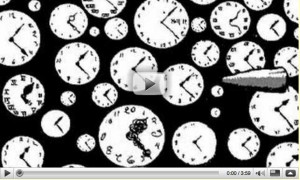
Though now largely a Live Arts Festival (albeit with all but 8 of the 300 shows offered this year still nostalgically designated in the catalogue as “Fringe”), there were certainly outstanding professional performances of a higher standard than ever before. So why not call it what it is? It is a two-week bonanza of the performing arts, featuring some of the most creditable and sought-after performers from Philadelphia and beyond. The Live Arts Festival should be proud of its quality and variety, without delusions of the original informality and all-inclusiveness that was the Fringe.
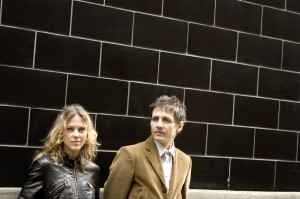
Dean and Britta’s 13 Most Beautiful: Songs for Andy Warhol’s Screen Tests was my top pick pre-Festival, and it did not disappoint. The live performance by the New York rockers was higher energy than their DVD of the same name, though still in keeping with their dreamy, hypnotic style that accords perfectly with the time-bending Warhol films. But while the DVD’s visual focus is on the films, with Dean and Britta heard only as background music and not seen, the audience’s attention was divided during the live performance between the infamous Warhol Superstars on the screen and the equally captivating Dean and Britta on the stage. Though the couple, just returned from a European tour, apologized for their jetlag, the audience would never have known they were not feeling 100%; the show was a treat for both the ears and the eyes. We can’t help but think that Andy would have numbered them among his “Most Beautiful.”
![Nick_Allin_and_the_ensemble_of_COMPANY[1] Nick Allin and the Ensemble of Company. Photo by Doug Greene, courtesy of EgoPo Productions.](https://www.theartblog.org/wp-content/uploaded/Nick_Allin_and_the_ensemble_of_COMPANY1-225x300.jpg)
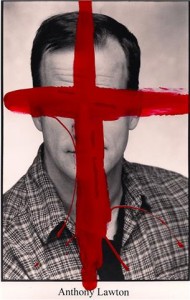
Perennial Philadelphia favorite Tony Lawton also took to the Fringe stage in his intensely personal autobiographical work-in-progress entitled Heresy, performed in the downstairs black box Lantern Lab at St. Stephen’s Theater. Often hilarious, at times disturbingly explicit and downright creepy, Lawton bared his soul and left no doubt as to the manic intensity of his personality and the depth of his talent. He can enthrall an audience with no stage, no set, no costumes, and but a few props; he is the consummate performer.
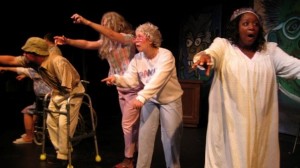
Lighter fare was offered by an assortment of monsters and aliens in Zombie! The Musical, Pig Iron Theatre Company’s Welcome to Yuba City!, and Paul and Sharri Jerue’s FrankenFestival (one of the Fringe’s best bargains, at $10 for a regular ticket and $5 for artists). The audiences for all three were appreciative of the clowning, mugging, and music; clearly everyone was there to have a good time, and they did. This frothy genre, inspired by classic and cult horror films, was well suited to the format of the fast-paced 15-minute shorts employed by the Jerues, whose clever writing and physical humor brought quick laughs in FrankenFestival, and avoided the pitfall of prolonged story-lines and repeated sight-gags that were barely sustainable in the other two full-length productions. While I’m sure the French, with their inexplicable passion for Jerry Lewis and mimes, would love all the residents of Yuba City as much as the sold-out house did on the closing night of the Festival, it was Geoff Sobelle’s ever-impressive, faun-like, gravity-defying acrobatics that stole the show.
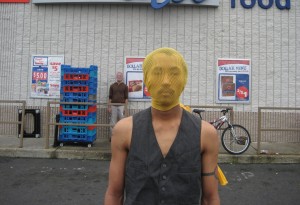
Kate Watson-Wallace’s conceptual dance piece, Store, the highly anticipated third installment in her American Spaces Trilogy, left the audience begging for less concept and more dance. The choreographer’s statement of uncontrolled consumerism in the US, visually enhanced by costume designer Millie Hiibel’s seemingly endless mounds of mass-produced clothing, was well taken, but needlessly belabored. When she and her beautifully toned dancers (anonymous bodies) finally began to dance, the audience’s excitement rose, then the piece quickly ended. It left us frustrated and wondering why such a talented dance troupe would have spent so little stage time doing what they do best. But when they did dance, it was extraordinary.
The Live Arts and Fringe Festival succeeds in presenting a mixed bag from which we all can choose to suit our own tastes; the question remains as to whether it will continue to raise its prices, so that it no longer suits many wallets, and becomes increasingly exclusive. If it does, it will surely eliminate the remainder of the real fringe audience and performers from the Fringe Festival. I wonder how many of the artists themselves could afford a pass to their own festival, especially if they wanted to bring their partners? At $650 per couple, maybe Kate Watson-Wallace was right to warn us about the dangers of rampant commercialism.
Check out the Philly Fringe Fest at YouTube
This review was originally published in the Central Voice.





